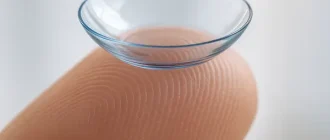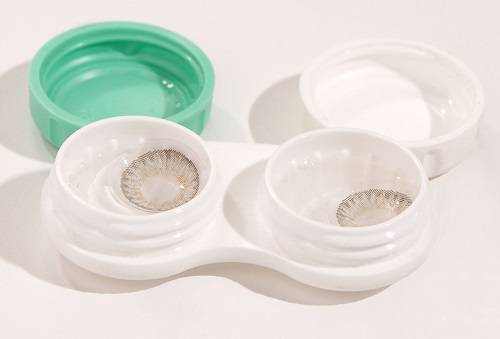If you’ve ever been to an eye doctor, you’ve likely heard the term “20/20 vision.” But what does it actually mean, and is it truly the pinnacle of human eyesight? 20/20 vision is a term used to describe standard visual acuity—essentially, the clarity or sharpness of your vision when standing 20 feet away from an eye chart. If you have 20/20 vision, you can see at 20 feet what an average person with normal eyesight can see at the same distance.
Interestingly, 20/20 isn’t necessarily “perfect” vision—it’s simply the baseline that eye doctors use. Some individuals have better than 20/20 vision, such as 20/15 or even 20/10, meaning they can see from 20 feet what most people can only make out from 15 or 10 feet away, respectively. This level of visual acuity is often seen in athletes or pilots, where exceptional vision can provide a competitive advantage.
Is 20/20 Vision the Best We Can Achieve?
While 20/20 is the benchmark, it doesn’t cover the full spectrum of what constitutes good eyesight. Visual acuity is just one component; other factors like depth perception, color vision, peripheral awareness, and contrast sensitivity also play a role in determining overall eye health and function.
In fact, 35% of adults in the United States have 20/20 vision without corrective lenses. However, that number increases significantly with the use of glasses or contact lenses. Corrective measures have allowed 75% of the population to achieve 20/20 vision or better, highlighting the impact of modern optometric care.
Beyond 20/20: What Are the Other Metrics of Vision?
If 20/20 isn’t necessarily perfect, what are the other indicators of excellent vision? Let’s break it down:
- Visual Field: The full scope of what you can see without moving your eyes. A healthy visual field typically covers about 180 degrees horizontally.
- Depth Perception: The ability to judge distances, which is crucial for activities like driving.
- Contrast Sensitivity: This helps in seeing objects that do not stand out from their background, such as a grey car on a foggy day. Good contrast sensitivity is key to functional vision in different environments.
- Color Vision: While not directly related to visual acuity, the ability to distinguish between colors is a significant factor in overall visual quality.
Did You Know?
The sharpest human vision ever recorded was 20/5. This means that the individual could see at 20 feet what a normal person could only see at 5 feet. Such exceptional vision is extremely rare and often observed in competitive sports settings. (Source: American Academy of Ophthalmology)
How Does Age Affect Vision Quality?
It’s well-known that eyesight tends to decline with age, but did you know that by age 40, many people start to experience presbyopia—the inability to focus on close objects? This is a natural aging process of the eye’s lens, affecting nearly 80% of people by their mid-40s. By age 60, almost everyone has some degree of this condition.
Laser surgery, bifocals, and other corrective measures can help manage these age-related changes, but they do not necessarily improve vision beyond 20/20.
Are There Technologies to Improve Vision Beyond 20/20?
Advancements in corrective surgeries and technologies such as LASIK have made it possible for individuals to achieve better than 20/20 vision. LASIK, for instance, is one of the most common elective surgeries globally, with about 700,000 procedures performed annually in the United States alone.
Average Cost of LASIK Surgery
| Region | Average Cost per Eye (USD) |
|---|---|
| United States | $2,000 – $3,000 |
| Europe | $1,500 – $2,500 |
| Asia | $1,000 – $2,000 |
These costs can vary significantly based on the technology used and the surgeon’s expertise. It’s essential to note that while LASIK can provide excellent results, it may not always lead to “super-vision” beyond 20/20.
How Common Is 20/20 Vision?
Recent studies indicate that only about 35% of adults in the United States have 20/20 vision naturally. However, with corrective lenses, that number rises significantly, with about 75% of adults achieving 20/20 vision or better. This highlights the importance of regular eye exams and appropriate corrective measures for maintaining optimal eyesight.
Visual Acuity by Age Group
This chart shows the percentage of people with 20/20 vision, both with and without correction, across different age groups. The blue bars represent the percentage of individuals with natural 20/20 vision, while the light blue bars show the percentage with corrected vision.
◼ 20/20 Vision without Correction (%)
◼ 20/20 Vision with Correction (%)
Myths About 20/20 Vision
- Myth: 20/20 Vision Means Perfect Eyesight.
- Truth: While 20/20 vision is often called “perfect,” it only refers to sharpness or clarity of vision. Other factors like color vision and depth perception are not reflected in the 20/20 measurement.
- Myth: Only Young People Can Have 20/20 Vision.
- Truth: People of all ages can achieve 20/20 vision, especially with corrective lenses or surgery. However, the natural aging of the eye can introduce other issues that affect overall visual quality.
Expert Opinion: Should You Strive for Better Than 20/20?
Achieving better than 20/20 vision may sound appealing, especially if you’re an athlete or a pilot, but for most people, the difference is negligible in daily life. Ophthalmologists generally agree that focusing on overall eye health is more crucial than striving for an arbitrary visual acuity score. Regular eye check-ups, a balanced diet rich in vitamin A, and protective measures against UV light can contribute significantly to maintaining good vision.
Advice from Our Editors
Ultimately, while 20/20 vision is often a goal, it’s only part of what constitutes healthy eyesight. Don’t be discouraged if you don’t naturally have 20/20 vision; with the right corrective measures, most people can achieve sharp, functional vision that meets their needs. Stay proactive about eye health by visiting an eye care professional regularly, and remember—healthy eyes are about much more than just seeing the eye chart clearly.





